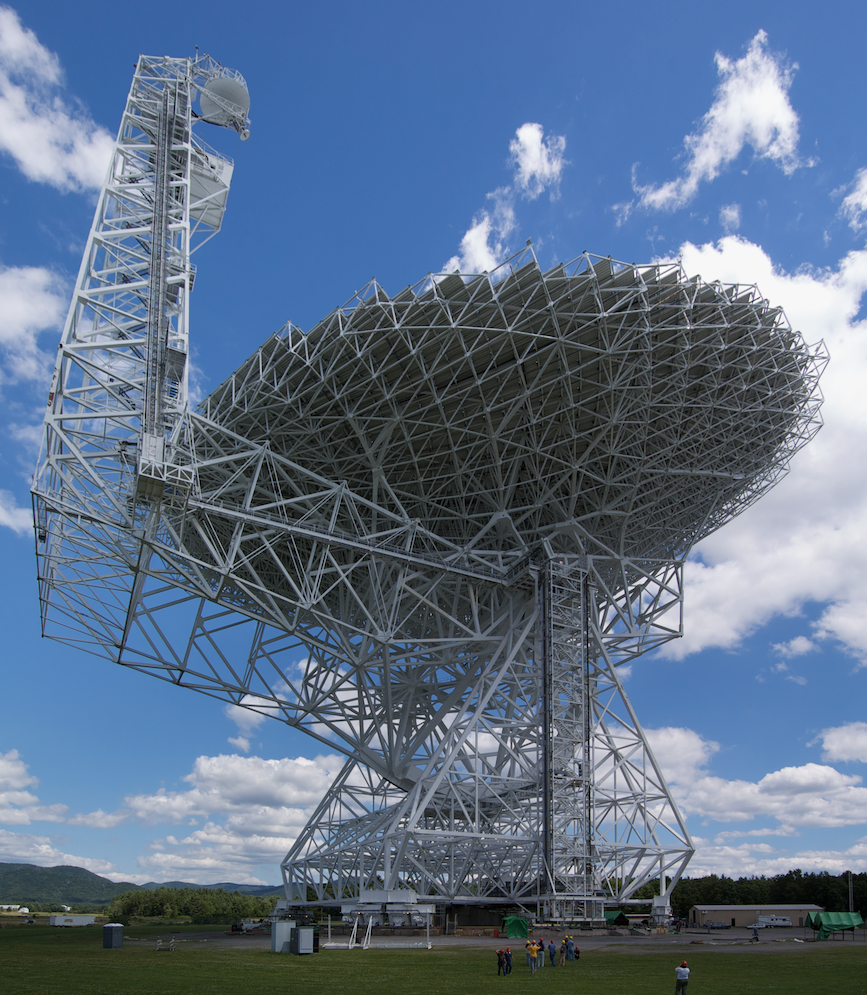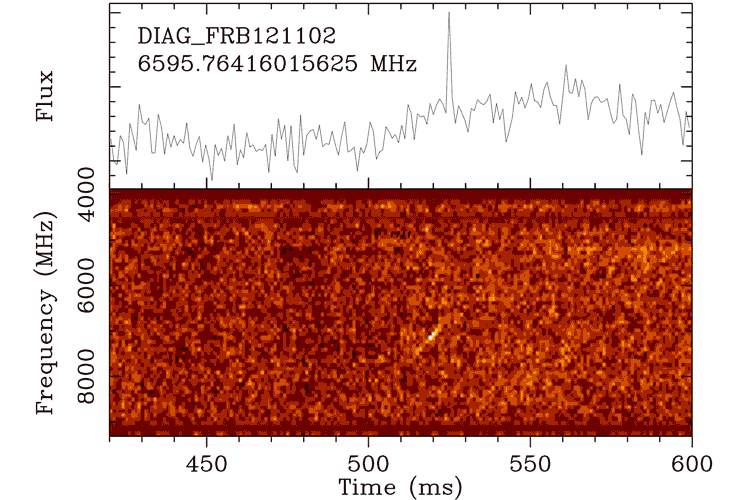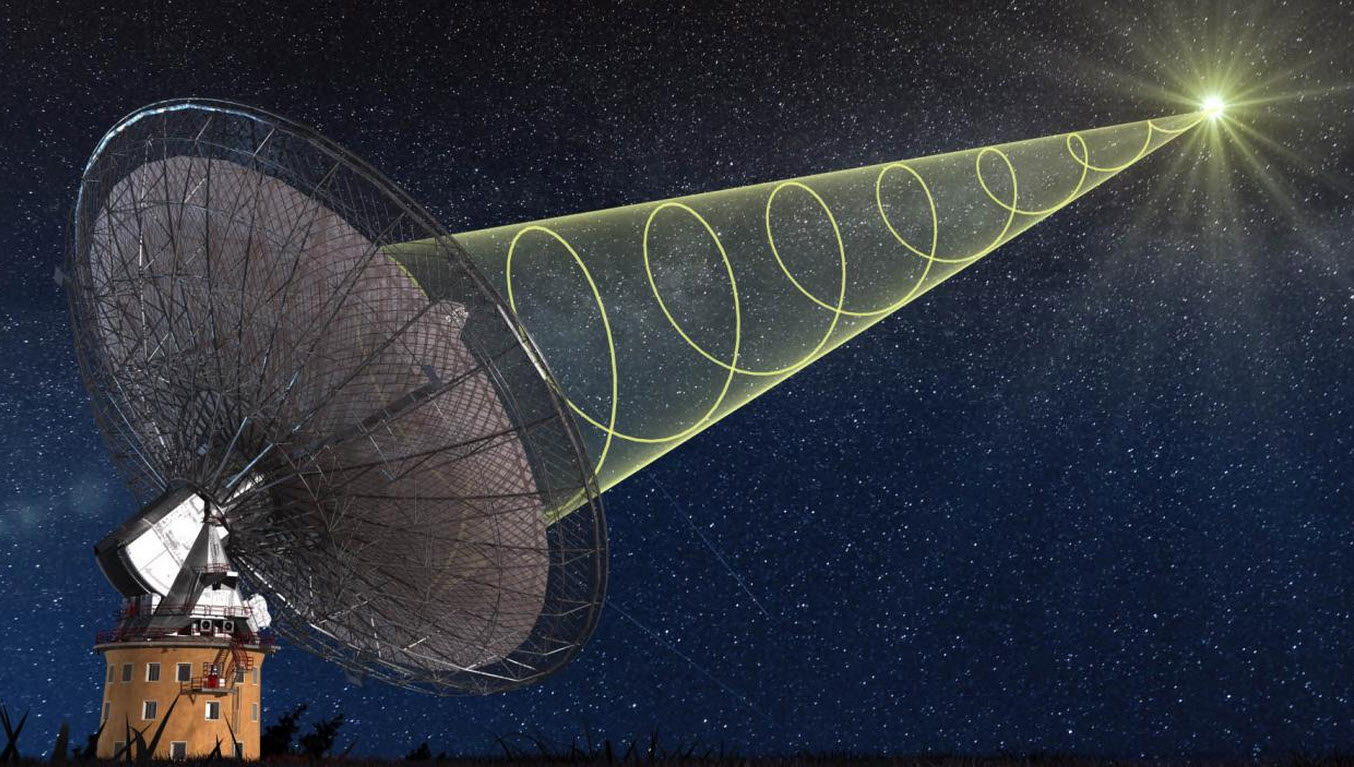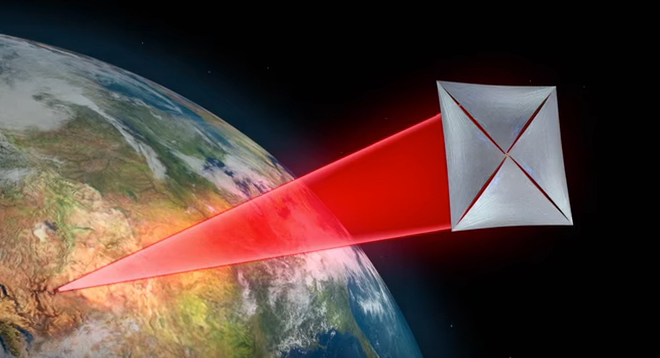Astronomers detect 15 high-frequency ‘fast radio bursts’ from distant galaxy
August 30, 2017

Green Bank Telescope in West Virginia (credit: Geremia/CC)
Using the Green Bank radio telescope, astronomers at Breakthrough Listen, a $100 million initiative to find signs of intelligent life in the universe, have detected 15 brief but powerful “fast radio bursts” (FRBs). These microwave radio pulses are from a mysterious source known as FRB 121102* in a dwarf galaxy about 3 billion light years from Earth, transmitting at record high frequencies (4 to 8 GHz), according to the researchers

This sequence of 14 of the 15 detected fast radio bursts illustrates their dispersed spectrum and extreme variability. The streaks across the colored energy plot are the bursts appearing at different times and different energies because of dispersion caused by 3 billion years of travel through intergalactic space. In the top frequency spectrum, the dispersion has been removed to show the 300 microsecond pulse spike. (credit: Berkeley SETI Research Center)
Andrew Siemion, director of the Berkeley SETI Research Center and of the Breakthrough Listen program, and his team alerted the astronomical community to the high-frequency activity via an Astronomer’s Telegram on Monday evening, Aug. 28.

A schematic illustration of CSIRO’s Parkes radio telescope in Australia receiving a fast radio burst signal in 2014 (credit: Swinburne Astronomy Productions)
First detected in 2007, fast radio bursts are brief, bright pulses of radio emission detected from distant but largely unknown sources.

Breakthrough Starshot’s plan to use powerful laser pulses to propel nano-spacecraft to Proxima Centauri (credit: Breakthrough Initiatives)
Possible explanations for the repeating bursts range from outbursts from magnetars (rotating neutron stars with extremely strong magnetic fields) to directed energy sources — powerful bursts used by extraterrestrial civilizations to power exploratory spacecraft, akin to Breakthrough Starshot’s plan to use powerful laser pulses to propel nano-spacecraft to Earth’s nearest star, Proxima Centauri.
* FRB 121102 was discovered Nov 2, 2014 (hence its name) with the Arecibo radio telescope, and in 2015 it was the first fast radio burst seen to repeat. More than 150 high-energy bursts have been observed so far. (The repetition ruled out the possibility that FRBs were caused by catastrophic events.)
FRB 121102: Detection at 4 – 8 GHz band with Breakthrough Listen backend at Green Bank
On Saturday, August 26 at 13:51:44 UTC we initiated observations of the well-known repeating fast radio burst FRB 121102 [Spitler et al., Nature, 531, 7593 202-205, 2016] using the Breakthrough Listen Digital Backend with the C-band receiver at the Green Bank Telescope. We recorded baseband voltage data across 5.4375 GHz of bandwidth, completely covering the C-band receiver’s nominal 4-8 GHz band [MacMahon et al. arXiv:1707.06024v2]. Observations were conducted over ten 30-minute scans, as detailed in Table 1. Immediately after observations, the baseband data were reduced to form high time resolution (300 us integration) Stokes-I products using a GPU-accelerated spectroscopy suite. These reduced products were searched for dispersed pulses consistent with the known dispersion measure of FRB 121102 (557 pc cm^-3); baseband voltage data were preserved. We detected 15 bursts above our detection threshold of 10 sigma in the first two 30-minute scans, denoted 11A-L and 12A-B in Table 2. In Table 2, we include the detection signal-to-noise ratio (SNR) of each burst, along with a very rough estimate of pulse energy density assuming a 12 Jy system equivalent flux density, 300 us pulse width, and uniform 3800 MHz bandwidth. We note the following phenomenological properties of the detected bursts: 1. Bursts show marked changes in spectral extent, with characteristic spectral structure in the 100 MHz – 1 GHz range. 2. Several bursts appear to peak in brightness at frequencies above 6 GHz.